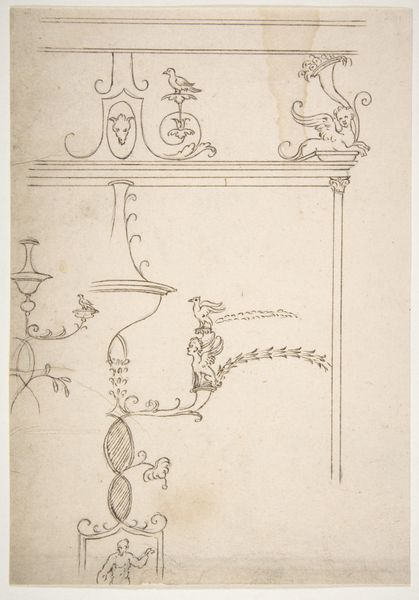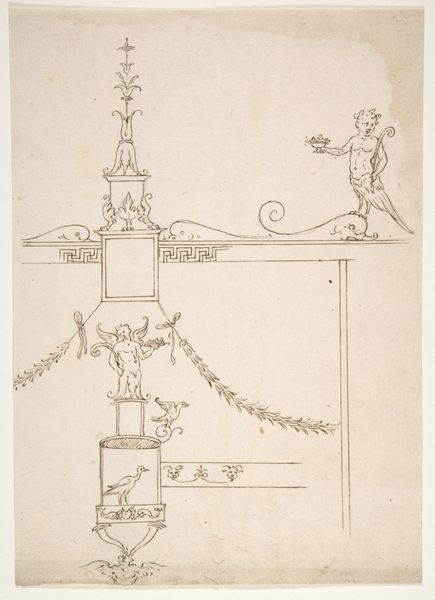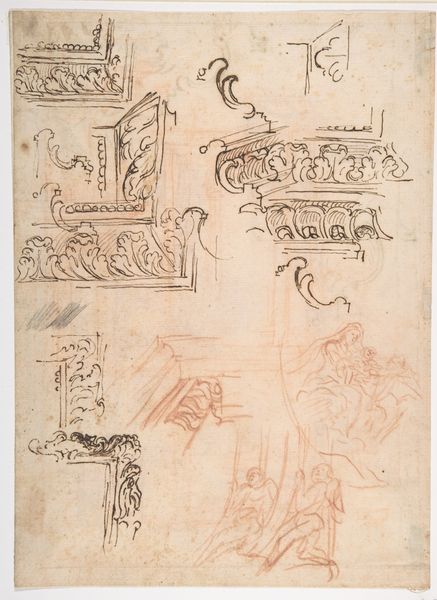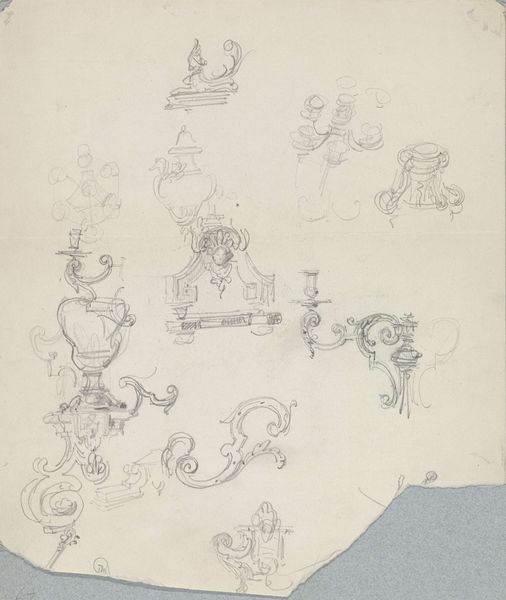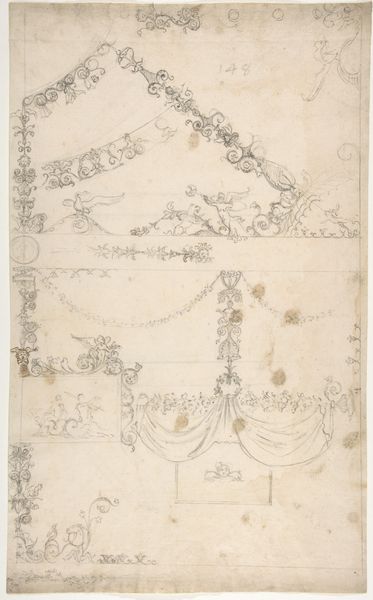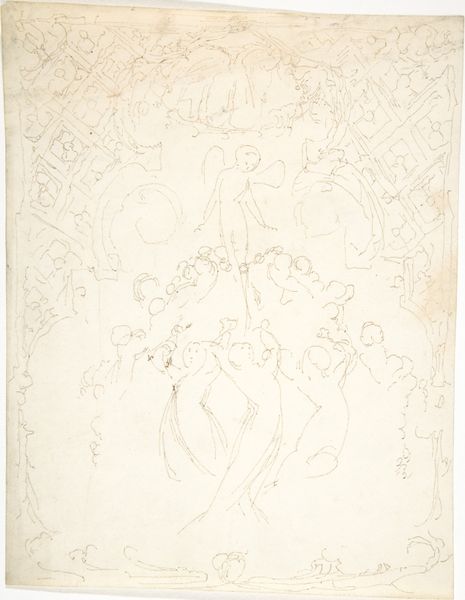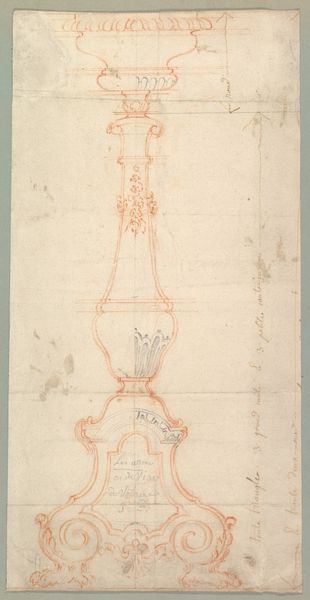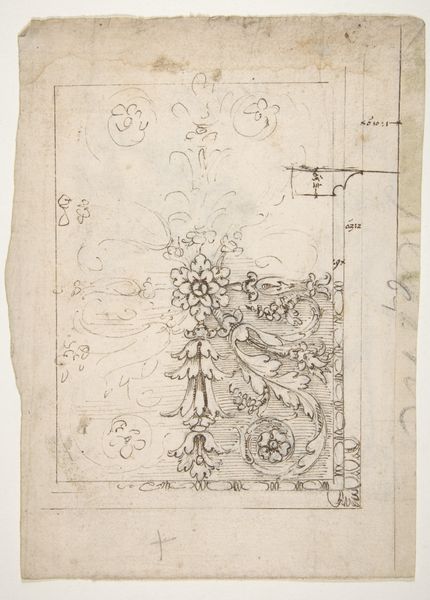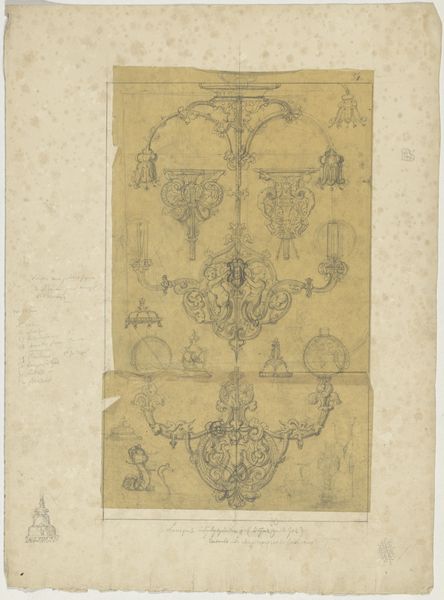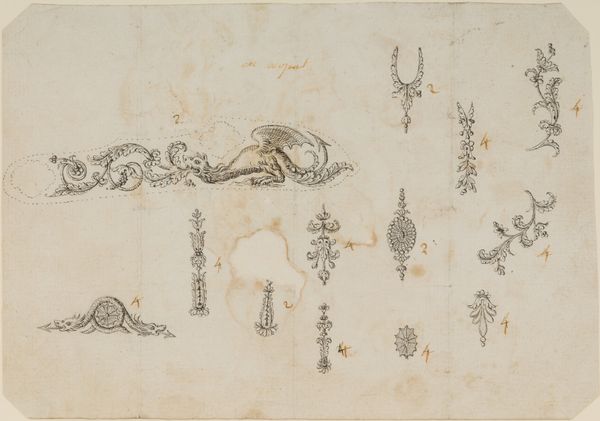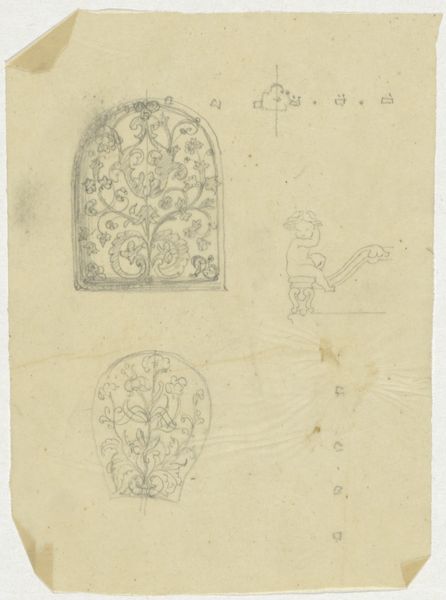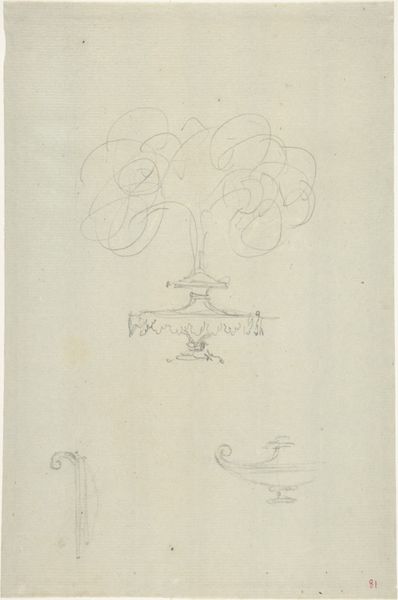
Domus Aurea, cryptoporticus, grotteschi, details (recto) blank (verso) 1500 - 1560
0:00
0:00
drawing, pencil
#
drawing
#
ink painting
#
figuration
#
11_renaissance
#
geometric
#
pencil
#
academic-art
#
italian-renaissance
#
miniature
Dimensions: sheet: 11 1/4 x 8 1/2 in. (28.5 x 21.6 cm) 3 1/8 x 1 1/2 in. (7.9 x 3.8 cm)
Copyright: Public Domain
Editor: So, here we have an ink and pencil drawing titled *Domus Aurea, cryptoporticus, grotteschi, details*, dating from 1500 to 1560. The artist is anonymous. What I find really interesting is how the images seem scattered across the page, like preparatory sketches but with a decorative quality all their own. What strikes you about this work? Curator: What interests me is the cultural context it provides. The Domus Aurea was Nero’s Golden House, right? This drawing, by an anonymous artist during the Renaissance, speaks to the rediscovery and reimagining of classical antiquity. We see these grotesque figures, these *grotteschi*, emerging from the "grottoes" of rediscovered Roman ruins. Editor: So, it’s literally about unearthing the past? Curator: Exactly! The Renaissance fascination with classical forms extended beyond sculpture and architecture. These drawings reveal a broader interest in the decorative arts and design principles of the Roman era. They become source material, almost a catalog, for new artistic endeavors. Note how these grotesque elements eventually made their way into paintings, frescoes, and other art forms of the time. Editor: That makes so much sense. So this drawing isn’t just a drawing. It is actually a window into how artists learned about and then repurposed classical design. I initially thought that it looked simple and that there was not too much to learn, but it seems that the setting for these drawings matters. The setting is very interesting here, and it shows some of the things going on at the time. Curator: Precisely! These are essentially artifacts reflecting that transmission, echoing Nero's opulence, filtered through a Renaissance lens. The art takes a public, educational role as a source of ideas for how things may or may not have looked at one time. Editor: Wow, that’s an entirely different perspective than I had. Thanks!
Comments
No comments
Be the first to comment and join the conversation on the ultimate creative platform.
